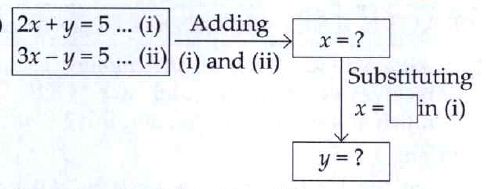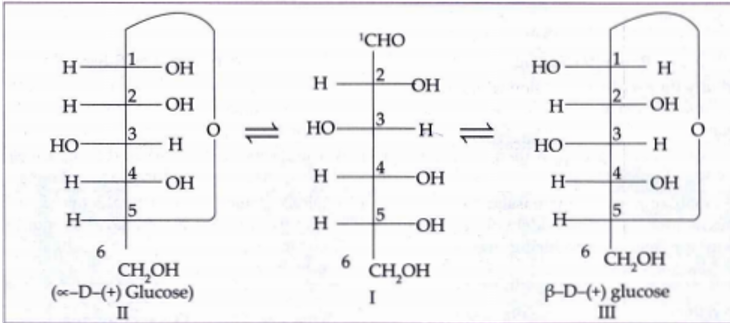Complete Solutions to EXAMPLE of chapter Biomolecules of Class 12 book with complete answers and questions
| Class 12 | CHEMISTRY |
| Chapter | Biomolecules |
| CHETANA PUBLICATION | EXAMPLE |
| Number Of Questions | 100 |
| Academic Year | 2023-24 |
What are the components of a balanced diet ?
01:25View SolutionWhat are the products of digestion of carbohydrates?
03:10View SolutionMajor constituent of muscle is
00:55View SolutionWhich constituent of diet is a source of high energy?
03:12View SolutionWhich are the primary structural materials of organisms?
04:12View SolutionHow do plants produce proteins?
04:23View SolutionWhat are the main ingredient of vegetable oils and milk fats?
03:12View SolutionWhat constitute the genetic material of organisms?
03:27View SolutionWhat are Carbohydrates? OR
Define Carbohydrates04:00View SolutionWhich is the most commonly used sugar.
02:10View SolutionWhere is sucrose obtained from.
01:44View SolutionWhat is the sugar present in milk called.
02:51View SolutionGive another name for carbohydrates.
02:01View SolutionHow are carbohydrates classified?
06:44View SolutionWhat are monosaccharides? (orglycose) Give examples.
03:22View SolutionWhat are oligosaccharides? Give examples.
11:40View SolutionClassify the following carbohydrates.
Cellulose01:34View SolutionClassify the following carbohydrates.
Maltose01:38View SolutionClassify the following carbohydrates.
Raffinose01:28View SolutionClassify the following carbohydrates.
Fructose02:20View SolutionClassify Monosaccharides
03:53View SolutionName the functional group present in the following:
Glucose01:37View SolutionName the functional group present in the following:
Fructose01:29View SolutionGive IUPAC names to the following monosaccharides.
`underset(CH_2OH)underset(|)underset(CHOH)underset(|)(CHO)`02:21View SolutionGive IUPAC names to the following monosaccharides.
`underset(CH_2OH)underset(|)underset((CHOH)_3)underset(|)(CHO)`02:58View SolutionGive IUPAC names to the following monosaccharides.
`underset(CH_2OH)underset(|)underset(CHOH)underset(|)(CHO)`02:21View SolutionDescribe the laboratory method for the preparation preparation of glucose.
OR How is glucose prepared from sucrose in the laboratory?03:38View SolutionWrite a note on the preparation of glucose from starch. OR
Write a note on the commercial preparation of glucose.03:01View SolutionWhat do you mean by aldohexose structure of glucose?
03:14View SolutionHow can you prove that the six carbons in glucose molecules form a straight chain?
02:10View SolutionWhat happens when glucose is treated with
Bromine water02:07View SolutionWhat happens when glucose is treated with
Dilute nitric acid04:19View SolutionWhat happens when glucose is treated with
Hydrogen cyanide02:36View SolutionWrite the reaction that indicates the presence of -CHO group in glucose.
02:19View SolutionWrite the reaction that indicates the presence of -CHO group in glucose.
02:19View SolutionWhat are the products df reaction of
`CH_3-CO-CH_3 with NH_2OH`01:54View SolutionWhat are the products df reaction of
`CH_3-CHO with HCN`01:10View SolutionWhat are the products of reaction of
`CH_3OH with CH_3-CO-O-CO-CH_3`03:30View SolutionName the reagent which on reaction with glucose confirms the presence of five hydroxyl group in glucose.
04:02View SolutionWhich reaction indicates that glucose has five hydroxyl group?
06:14View SolutionWrite the structural formula of glucose showing all the bonds in the molecule. OR
Number all the carbons in the molecules giving number 1 to the (-CHO) carbon. OR
Mark the chiral carbons in the molecule with asterisk (*).OR
How many chiral carbons are present in glucose.05:30View SolutionHow many stereoisomers or optical isomers can a structural formula containing 'n' number of chiral atoms have?
02:26View SolutionHow many optical isomers are possible for glucose?
02:53View SolutionWhat are the ways to represent three dimensional structure of an organic molecule?
09:14View SolutionHow is a Fischer projection formula drawn?
03:32View SolutionGive the Fischer projection formulae of
Glucose01:42View SolutionGive the Fischer projection formulae of
Gluconic acid02:50View SolutionGive the Fischer projection formulae of
Saccharic acid01:52View SolutionHow will you prove that Glucose contains one primary alcoholic group?
04:49View SolutionGive the specific rotation of glucose?
02:50View SolutionWhy is glucose called dextrose?
09:53View SolutionHow is a monosaccharide assigned `D//L` configuration.
04:13View SolutionDraw the simple Fisher projection formulae of D- (+)- glucose and D-(-) fructose)
03:26View SolutionAssign `D//L` configuration to the following monosaccharide. Threose
03:50View SolutionClassify the following carbohydrates.
Maltose01:38View SolutionRepresent the ring structure of glucose using Fischer projection formulae.
06:34View SolutionHow is the ring structure of glucose formed?
03:13View Solution 01:42View Solution
01:42View SolutionIn fig. 14.2 which carbon is called the anomeric carbon?
 05:33View Solution
05:33View SolutionDraw a neat diagram for the Haworth formula of glucopyranose. Write Haworth projection formulae of
`alpha-D-(+)-glucopyranose03:25View SolutionDraw a neat diagram for the Haworth formula of glucopyranose. Write Haworth projection formulae of
`beta-D-(+)-glucopyranose01:51View SolutionDistinguish between reducing and non-reducing sugar.
04:45View SolutionWhat are reducing and non-reducing sugars?
03:33View SolutionWhy is fructose called levulose?
02:05View SolutionHow does fructose exist in the free state and combined state.
05:09View SolutionWhat are disaccharides?
04:23View SolutionWhat is a glycosidic linkage?
05:35View SolutionHow is a glycosidic linkage formed?
04:11View SolutionWrite a note on Glycosidic linkage.
04:51View SolutionGive the Haworth formula of
Maltose02:22View SolutionGive the Haworth formula of
Sucrose04:10View SolutionGive the Haworth formula of
Lactose02:38View SolutionGive the Haworth formula of
Glucopyranose03:13View SolutionGive Scientific reasons.
The disaccharide sucrose gives negative Tollen's test while the disaccharide maltose gives positive Tollen's test.02:41View SolutionGive Scientific reasons.
Hydrolysis of sucrose is called inversion.03:30View SolutionExplain why Lactose gives positive Tollen's test.
01:56View SolutionExplain term polysaccharides.
01:59View SolutionIs galactose, an aldohexose or ketohexose.
02:07View SolutionWhich carbon in galactose has different configuration compared to glucose?
02:27View SolutionDraw Haworth formula of `alpha-D galact o se` and `beta-D-galact o se`.
04:46View SolutionWhich disaccharides among sucrose, maltose and lactose is / are expected to give positive fehling's test?
03:47View SolutionWhat are the expected products of hydrolysis of lactose?
02:36View SolutionName few natural polysacaharides.
03:47View SolutionWhen you chew plain bread, chapati or bhakari for a long time, it tastes sweet. What could be the reason?
04:55View SolutionName the two components of starch.
03:59View SolutionCompare amylose and amylopectin in starch.
04:53View SolutionWhy can cellulose not be digested by the human digestive system. OR
Give Reason : Cellulose cannot be digested by humans.03:37View SolutionWhat is the role of cellulose in our food?
03:04View SolutionHow is chemical hydrolysis of cellulose carried out?
01:53View SolutionWhat is starch?
02:54View SolutionWhat is cellulose?
02:45View SolutionWhat is Glycogen?
02:41View SolutionWhere is glycogen found?
02:30View SolutionGive the Haworth formula for amylase.
05:42View SolutionGive the Haworth formula for amylopectin.
02:54View SolutionGive the Haworth formula of cellulose.
02:35View SolutionWhat is the product of reaction of acetic acid with ammonia?
01:44View SolutionWrite the structural formula of N-methyl acetamide.
01:17View SolutionWhat are the nitrogenous nutrients in human diet?
05:47View SolutionWhat are the nutrition sources of proteins
01:38View Solution
EXAMPLE questions and complete solutions for chapter Biomolecules of CHETANA PUBLICATION of Class 12
